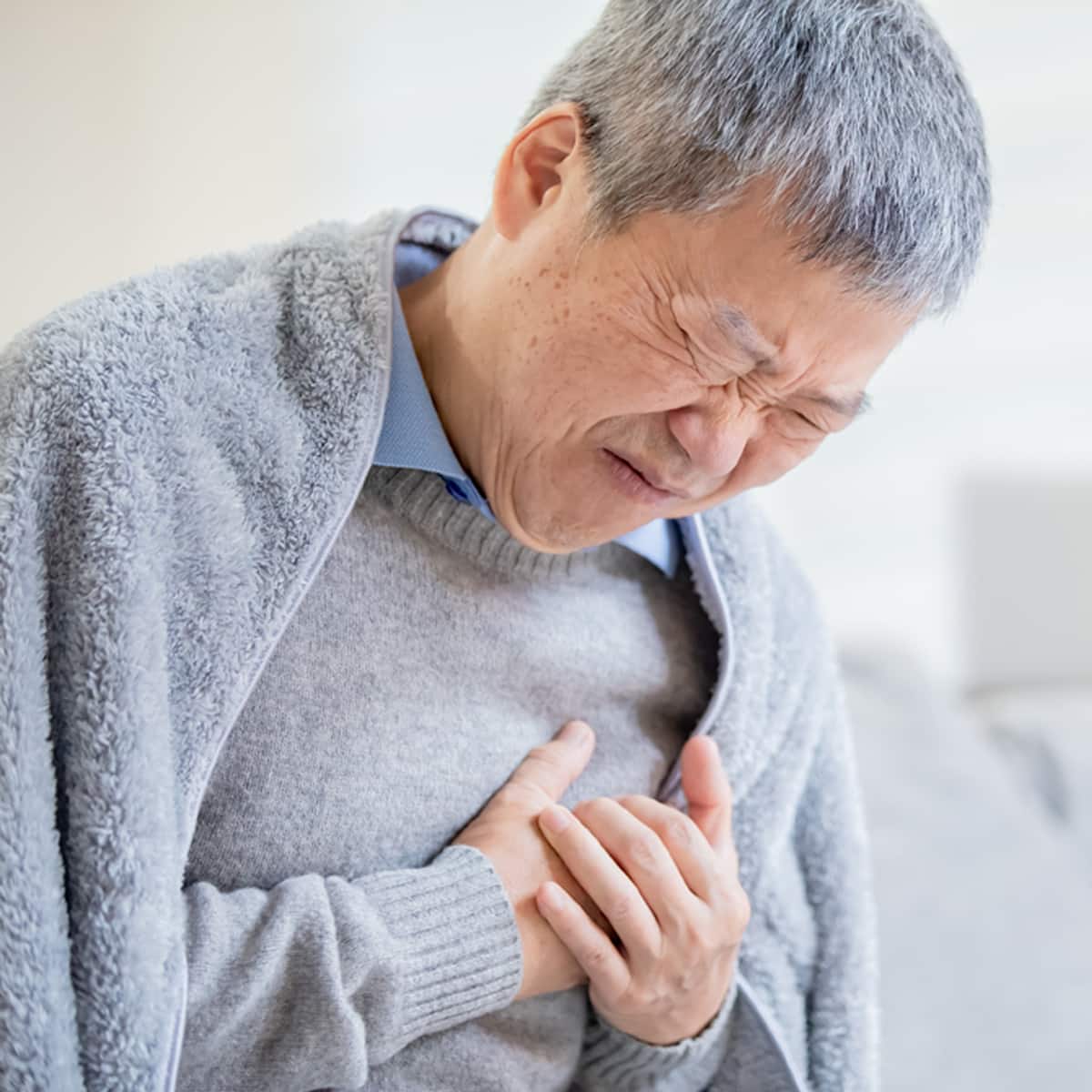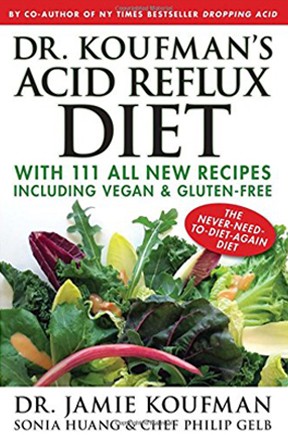At-A-Glance
- Chest pain, especially severe crushing chest pain, can be a terrifying and life-threatening emergency, as you might be having a heart attack. But a common “alternative” diagnosis is acid reflux, which can mimic heart attack, This is called non-cardiac chest pain.
- If you have chest pain, regardless of what you think might be happening, you MUST seek immediate medical attention, preferably at a hospital emergency room; and if you are having shortness of breath or irregular heartbeat, call 911 immediately!
- If reflux is the cause of the chest pain, it is from severe heartburn or esophageal spasm, and most such attacks occur in the evening after a big meal. In addition, most people who get reflux-caused chest pain have a prior history of having reflux symptoms like heartburn. The chest pain may go through to your back, but it seldom radiates to the jaw, neck, or down the arm, which common in heart attacks. Also with reflux, anti-acids can sometimes promptly alleviate the chest pain.
- Besides reflux, the most common causes of non-cardiac chest pain are pulmonary embolism (also life-threatening), pneumothorax, pneumonia, pleurisy, shingles, musculoskeletal problems, costochondritis, and lung cancer.
What Are the Symptoms of a Heart Attack?
The coronary arteries supply blood and oxygen to the heart muscle itself; and most heart attacks are events caused by a sudden blockage of one or more coronary arteries, potentially leading to death of some of the heart muscle, a so-called myocardial infarction (MI). A second type of heart attack is caused by a dangerous irregular heartbeat (arrhythmia) such as ventricular tachycardia. In the case of the latter, the chest pain is variable, but most people with this feel like their heart is “beating out of their chest.”
Other symptoms of a heart attack are pain or discomfort in the jaw, neck, arms (usually the left arm), shoulders, or back, as well as feeling weak, light-headed, faint, having shortness of breath, and/or a cold-sweat or nausea. Note: MI symptoms are sometimes different for men and women; for some reason, women seen to have less pain, even no pain, with a heart attack.
If you are having these symptoms, go to a hospital emergency room or call 911 ASAP.
As Acid Reflux Can Mimic a Heart Attack, How Do I Tell the Difference?
Acid reflux — (GERD, gastroesophageal reflux disease) — occurs when stomach acid washes up from the stomach into the esophagus. This can cause severe heartburn, intense chest pain usually below the breastbone. Another reflux-related cause of chest pain is esophageal spasm, which involves abnormally-intense esophageal contractions. Using esophageal manometry, we have seen pressures as high as 500 mmHg, almost off the pressure chart, in this condition.
Heartburn and esophageal spasm can both mimic a heart attack; however, there are differences. With heart attacks (MIs), there is often associated irregular heartbeat, pain radiating to the jaw, neck, and/or down the left arm. With reflux-caused chest pain, the attacks usually occur in the evening after a large meal, and may be associated with indigestion and other reflux symptoms. Furthermore, most people with reflux-caused non-cardiac chest pain usually have a long history of having reflux.
Note: Sometimes drinking a cup of warm water with a half-teaspoon of baking soda, or taking a double-dose of store-bought anti-acids can promptly alleviate reflux-induced chest pain; even a hand-full of Tums or Rolaids may do the trick.
Other Common Causes of Chest Pain
Pulmonary Embolism. Potentially life threatening, a pulmonary embolism (PE), is a blood clot in an artery (or arteries) of the lungs. Usually, the event is sudden-onset, and occurs when a blood clot travels to from one of the deep veins in the leg to the lung. The medical term for the leg clot is DVT (deep vein thrombosis).The symptoms of PE are chest pain, difficulty breathing, fast or irregular heartbeat, and light-headedness. Most people with PE also have DVT leg symptoms such as leg pain, swelling, tenderness, and sometimes skin redness. People with possible PEs are hospitalized and the diagnosis is made with special scanning; PEs are treated with blood-thinners (anticoagulants).
If you think you might be having a pulmonary embolus, call 911 and go to a hospital ASAP.
Pneumothorax. Pneumothorax literally means that there is air in the chest (in the pleural cavity, the potential space between the chest wall and lung). A pneumothorax is a collapsed lung, and it happens suddenly. In addition, pneumothorax is usually caused by trauma or very vigorous exercise, but not always. The primary symptoms of pneumothorax depend on whether it is a partial or complete collapse of the lung. Symptoms may be sharp chest pain (on the affected side), shortness of breath, rapid breathing, increased heart rate, and sometimes, cough, extreme fatigue, and/or bluish skin. Pneumothorax usually requires hospitalization.
If you think you might have a pneumothorax, call 911 and go to a hospital ASAP.
Pleurisy. Pleurisy refers to inflammation of the pleura, the membrane surrounding the lungs. The common symptoms are sharp chest pain that is much worse with inhalation (breathing in), especially on deep inspiration. The most common causes of pleurisy are viral infection (most common) and pneumonia, but the list includes tuberculosis, pulmonary embolism, and pneumothorax.
If you think you might have pleurisy, contact your doctor immediately or go to a hospital.
Shingles. Shingles (Herpes zoster) is caused by the re-emergence of herpes zoster infection, Chicken pox virus, in someone who had had chicken pox earlier in life. The virus can lay dormant for decades and then re-emerge as shingles. Shingles involves one side of the body, often the chest, never crosses the midline, and follows a major nerve path. Shingles usually doesn’t start with pain, but rather with burning and itching of the area of the body where a rash and fluid-filled blisters will later develop. After the initial phases, the pain from shingles can become severe. Note: A Shingles vaccine is now available; it is usually reserved for people over 50-year-of-age.
Costochondritis. Costochondritis is painful inflammation of the cartilages attaching the ribs to the breastbone (sternum)l it is usually caused by a virus. The affected areas may be painful to the touch, The condition affects women more than men (70/30), and costochondritis is considered a diagnosis of exclusion, treated with anti-inflammatory medications. The prognosis for complete recovery is good.
Musculoskeletal Chest Pain. Muscle tears and strains cause musculoskeletal chest pain, with intercostal muscle strains being the most common. Pectoralis muscle tears are usually from heavy lifting or trauma and are more common in athletes. Besides muscle and tendon injuries, myofascial pain syndrome and fibromyalgia are other causes of musculoskeletal chest pain.
Lung Cancer. Usually related to cigarette smoking, lung cancer is the leading cause of cancer deaths in the U.S. for men and women. Symptoms include chronic cough, shortness of breath, hemoptysis (coughing up blood), deep chest pain, hoarseness, recurrent lung infections, and sometimes weight loss and bone pain. Anyone with these symptoms should see a physician and have a chest X-ray ASAP.









